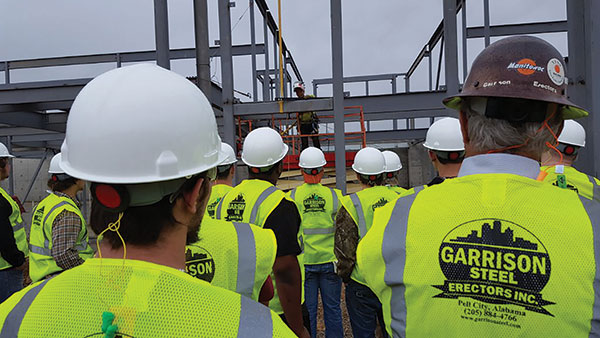
Learning the job on the job
Story and Photos by Graham Hadley
Photos courtesy of Garrison Steel
When he was growing up, John Garrison’s greatest challenge was to work his way up from high school student to one day owning an industry-leading metal fabrication and erection company.
Today, that company, Garrison Steel, employs more than 200 people in Pell City.
Now he has a new challenge – finding skilled workers from a dwindling workforce to fill the jobs at his company, which has been responsible for the construction of buildings across the Southeastern United States.
So Garrison has come up with a plan to help his company and the workforce grow by building a training classroom at his facility.
The problem
For decades, people working in skilled trades, everything from metal fabrication to construction, plumbing to welding, were usually trained, almost apprentice style, by the previous generation.
But as the focus in secondary education turned more and more to two- and four-year college prep, fewer and fewer people were training in these essential skill areas, Garrison said.
That focus, combined with a general social impression that factory and construction jobs were dangerous and somehow less desirable than professional employment, has resulted in a serious drought of skilled workers at a time when the economy is expanding, particularly in this region, and exactly those trade skills are needed the most.
Existing skilled employees are gradually aging out of the workforce and, for the past couple of decades, few people have been stepping up to fill those positions — despite drastically improved work conditions and good pay, Garrison said.
“I am one of the last. My generation is the last of the people trained by skilled union laborers in our jobs,” he said.
Over the last few years, backed by the National Center for Construction Education and Research formed at the University of Florida, St. Clair business leaders like the Economic Development Council and education officials from Jefferson State Community College and the Pell City School System have made great strides in workforce development, offering high school and college students training in exactly those skills that are needed most.
And they did not do the work alone. Businesses across the board, from manufacturing and construction like Ford Meter Box, Goodgame Construction and WKW Automotive to medical offices and other companies have stepped into the partnership to provide the training and jobs for the students.
Taking the program in-house
From the beginning, Garrison and other industry leaders recognized they needed partnerships with local educators, both at the secondary and post-secondary levels — and they found exactly what they were looking for in Jeff State and the Pell City School System, he said.
Forming that partnership has been a struggle to get similar programs off the ground all over the country, but not in St. Clair, Garrison said.
While that partnership laid the foundation for initial job training — teaching students how to weld, construction techniques, OSHA safety standards and the like — the basic tools they would need to get their foot in the door after high school, Garrison wanted to take the process a step further.
“So in June of 2016, I asked Jefferson State to meet with seven area high schools to discuss a pilot program to take up to 25 high school students in dual enrollment and begin teaching out of the NCCER Ironworking curriculum. They all agreed and in January began the first ironworker program four hours per day, five days a week for 16 weeks,” he stated in a press release.
“Money for books and a classroom at Jefferson State Pell City for the first eight weeks was funded with Federal Perkins Grants, and the second eight weeks were at a newly built training center at Garrison Steel, where students learned theory and hands-on with welding, cranes, rigging, fabrication, oxygen and acetylene cutting, and much more.”
The first class finished up at the new facility at Garrison Steel as school wound down for the 2016-2017 year, and Garrison sees it as nothing but a great success and a huge step forward for the workforce development initiative he and the other business, education and industry leaders have been working toward.
“Our classroom is set up to do half theory and half practical. We integrate practical in nearly every day’s classroom experience, which breaks the monotony and adds to the connectivity in what they are reading.”
He said that appeals to students who are interested in learning the theory behind the work they are doing with their hands, but also is an ideal environment for those students who may not like a traditional classroom environment.
“Many kids don’t like book-work because they cannot see the connection between theory and practical. So, as a teacher this year, my goal was so that when they read, and there was a lot of reading, that we stopped often enough to see real-world applications and for them to connect.”
The only thing Garrison said they were not able to do this year, and that they will have next year, is a steel tower where students can practice and learn with safety and other rigging equipment in a real-world environment.
“The students will be training off the ground with safety equipment.”
What’s next
This is only the first step, for Garrison’s teaching center and for the students.
Now that they have cemented a relationship with local schools, he wants to reach out to people already in the workforce who have the skills training but not the theory behind what they are doing.
“This year our program captured those students who are available because they are in school. We have figured out how to utilize those students and train them. The next challenge for the fall classes is to figure out how to integrate what we call incumbent workers, those who are out there, already with jobs, sometimes at distant job-site locations, that have only the practical side of learning and virtually no theory to their learning.”
And those students won’t necessarily have to come to Garrison Steel or Jefferson State. Garrison has plans to use the Internet and distance learning to help train workers at their job sites.
The students have received their entry-level training this year, but there are many more classes and options available to them down the road.
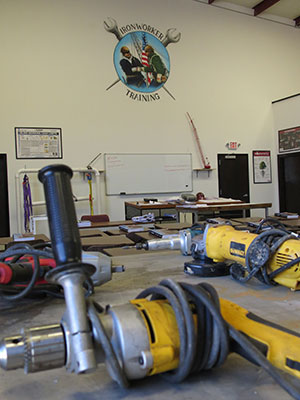 “The theory is this — these guys who are going to graduate high school want to get out and get a job in the workplace, but that is just a start. In describing it, I try to play a movie in their head: ‘You get really good at what you know how to do skill-wise. Then you become capable of managing those skills of others, learning another new role in the company.’
“The theory is this — these guys who are going to graduate high school want to get out and get a job in the workplace, but that is just a start. In describing it, I try to play a movie in their head: ‘You get really good at what you know how to do skill-wise. Then you become capable of managing those skills of others, learning another new role in the company.’
“As the company grows, we need new managers. As time goes by, older guys like me age out, and we fill those positions from the bottom up. That is the theory, the process we tell these guys,” Garrison said. “We want them to be able to work all the way up to owning their own company one day.”
And as you learn one skill, more open up to you — in the workplace and in college.
“Just because you start out a welder does not mean you have to be a welder for the rest of your life,” he said.
“I have explained to my students that you know more technical aspects of our business than many of the people who have been working in the field for six years or more. They have a practical advantage over you, but you are learning the more challenging part, which is theory, and you will get the practical experience once you are hired.
“Now you have a distinct advantage over the incumbent workforce and have a pathway to higher positions later in your career.”
Payoff for students
and business
The move is not entirely altruistic. Garrison readily admits that having a skilled workforce at his disposal can save money and cut down drastically on job time. It also creates an overall safer work-site environment.
“The cost of labor is driving up the cost of construction. The cost of labor does not necessarily mean higher wages,” he said. The longer it takes to complete a job, the more expensive the project is.
“What a skilled workforce can do in three months might take an unskilled workforce four months to do. The problem is not a lack of workers; it is a lack of skilled workers.
Students who have enrolled in the program and are working for Garrison are similarly reaping the rewards of their efforts.
David Graves, who has previously talked about his experience at Garrison Steel soon after his graduation, has taken part in some of the classes and continues months later to move down the career path he has embraced.
“When he added the welding school, I took that. I was in processing before, now I am in welding, and that is going in the direction I want to be in,” he said.
“I want to learn more about fabrication, and welding is a step in that direction. …”
And it is the combination of classroom instruction and hands-on that is making all the difference.
“It really helps going through the class, giving you an understanding, but it won’t teach you to weld by itself. You learn that on the floor, learn from trial and error, grinding out your mistakes.”
Down the road, Graves hopes to move up to a supervisor or quality control position.
“There are classes for that at college. That opens doors like project manager.”
Matt McCrory is another employee who has benefitted from the multifaceted training program.
He has been at Garrison for two years now and has worked his way to an office position, lotting, where they break down the different design drawings into their components, which makes fabrication easier and more organized.
He originally took the welding course at Jefferson State and has continued his training at Garrison.
“That class helped me read the drawings. That is the biggest thing: Since I mostly read drawings, how things are applied, how they are used, how they are built,” McCrory said. “If I don’t know how to read the drawings, I can’t do my job.”
He plans on continuing to work at Garrison, but also sees more college in his future at Jefferson State, focusing on business administration.
“The lessons I have learned here will help in college,” he said, adding that he definitely has a better idea of what he wants his career path to be now that he has been in the workforce. Something he said was very much lacking when he was a senior in high school.
One graduate of the class, Alex Bowman of Pell City, is still in school but is already on the job.
Bowman is a 17-year-old who just finished his junior year and is working at Garrison Steel.
And he already can see his path ahead.
“I am looking at doing this for a career, definitely something as an ironworker with Garrison Steel,” he said, pointing to the owner as an example. “Seeing Mr. Garrison’s investment in us makes me want to work harder, to one day get to the level he is at. It’s very inspiring.”
Studying in the class and working at Garrison has been ideal for Bowman, who readily admits he is not a fan of traditional classroom environments.
“I am not very good in a classroom. You can learn the idea of what you want from a book, but hands-on, you actually learn how to do it,” he said.
And because he now has some certification under his belt, he has options.
“NCCER was a huge step up for us when it came to the ironworker program. It means, when you graduate, you have jobs waiting for you. Having your core training shows a lot of employers you have the ability and intentions to step up and get ahead in the game.”
Return on Investment
“I know for a fact that a one-dollar investment in training returns three in productivity. … It’s not altruism; it’s survival,” Garrison said.
He is quick to point out that he is not the only one investing in the program — support he could not have made the new classroom work without.
“Red-D-Arc Welders are a major contributor to our program with welding equipment donated. The additional supporters of our program are NUCOR Steel, Cobb Wire Rope and Sling, NEX AIR, and Lincoln Electric and Service Construction Supply (SCS),” he said.
Between that kind of support and the growing partnership with education, business and organizations like the EDC, Garrison sees a bright future for workforce development in St. Clair County.











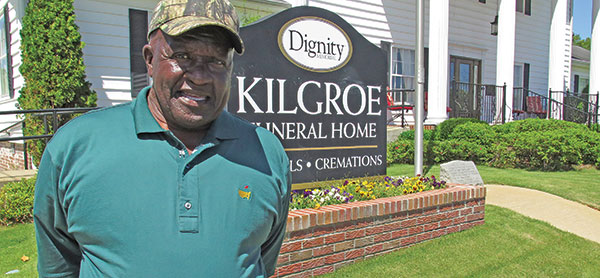
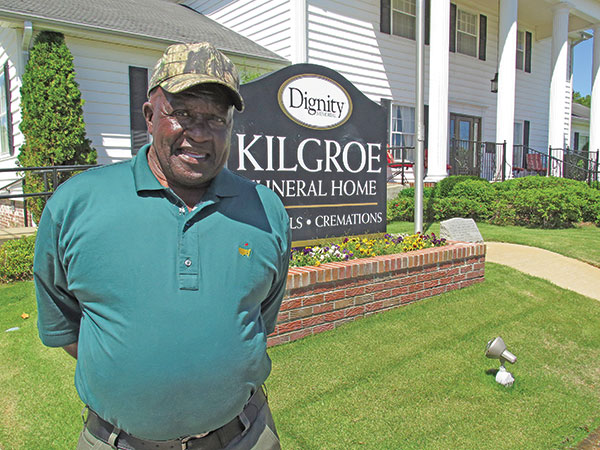
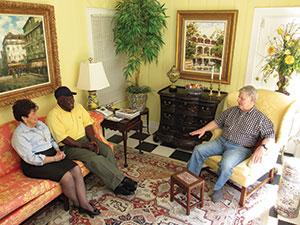 Harry Charles was 9 when his father, Blois McCoy, died at the age of 37, leaving his mother, Josephine McCoy, with eight children to raise. Vowing to aid his mother, Harry Charles stepped up to help for the first of countless times, going to work doing odd jobs around town and at the Lee Motel, where his mother was employed.A 12-year-old Harry Charles was cutting grass at the motel when a friend of the Kilgroe family asked him if he’d like another job. “I said, ‘Yes ma’am.’ That was 1962, and I’ve been here ever since,” says Harry Charles.
Harry Charles was 9 when his father, Blois McCoy, died at the age of 37, leaving his mother, Josephine McCoy, with eight children to raise. Vowing to aid his mother, Harry Charles stepped up to help for the first of countless times, going to work doing odd jobs around town and at the Lee Motel, where his mother was employed.A 12-year-old Harry Charles was cutting grass at the motel when a friend of the Kilgroe family asked him if he’d like another job. “I said, ‘Yes ma’am.’ That was 1962, and I’ve been here ever since,” says Harry Charles.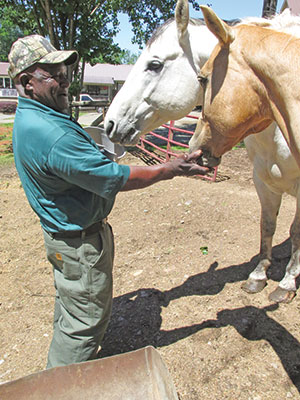 He grew up side by side with Sonny Kilgroe, who was a few years older and taught Harry how to do most every job at the funeral home. “We were always working together. He helped me, and I learned a lot. Mr. Sonny was like my brother,” Harry says. Sonny died in 2015. “I’ll never stop missing him.”
He grew up side by side with Sonny Kilgroe, who was a few years older and taught Harry how to do most every job at the funeral home. “We were always working together. He helped me, and I learned a lot. Mr. Sonny was like my brother,” Harry says. Sonny died in 2015. “I’ll never stop missing him.”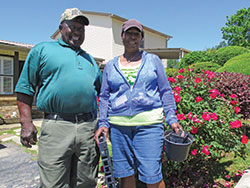 Jane Kilgroe recalls that when she and Sonny were about to get married, Sonny was so nervous that Harry Charles packed Sonny’s suitcase for the honeymoon. “That’s how close they were,” Jane says.
Jane Kilgroe recalls that when she and Sonny were about to get married, Sonny was so nervous that Harry Charles packed Sonny’s suitcase for the honeymoon. “That’s how close they were,” Jane says.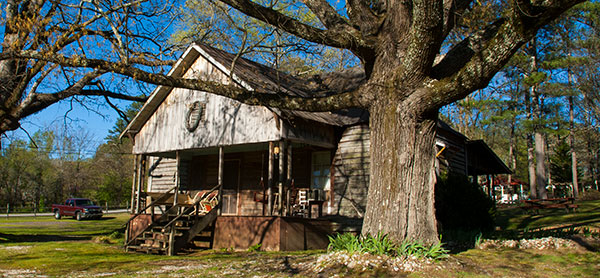
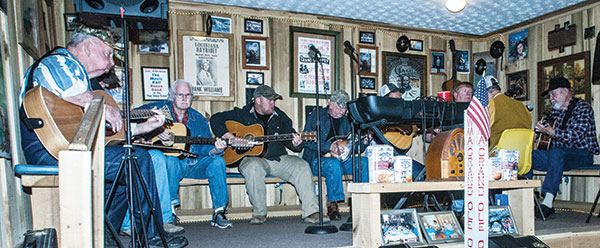
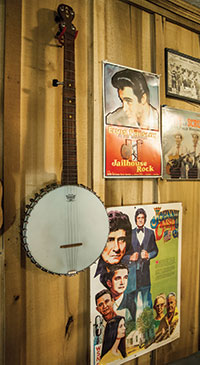 Adron and Joyce Willingham and their son, Mark, turned Adron’s 200-year-old, four-room family home in Gallant into a tiny version of the Grand Ole Opry. They knocked out a wall between two of the rooms, built a small stage, brought in durable, hard-plastic chairs and a sound system. The people started coming. The music officially begins at 6 p.m., but the musicians start straggling in about 5:30 to tune up. The room seats 40-45 people. It’s free, and anyone is welcome to come and play, sing or just listen.
Adron and Joyce Willingham and their son, Mark, turned Adron’s 200-year-old, four-room family home in Gallant into a tiny version of the Grand Ole Opry. They knocked out a wall between two of the rooms, built a small stage, brought in durable, hard-plastic chairs and a sound system. The people started coming. The music officially begins at 6 p.m., but the musicians start straggling in about 5:30 to tune up. The room seats 40-45 people. It’s free, and anyone is welcome to come and play, sing or just listen.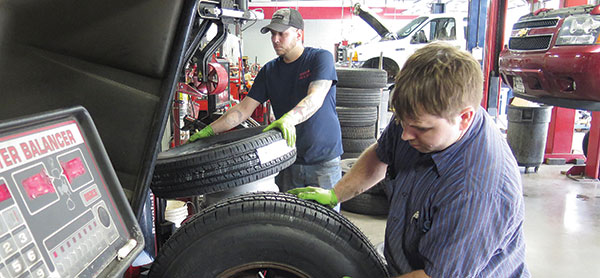
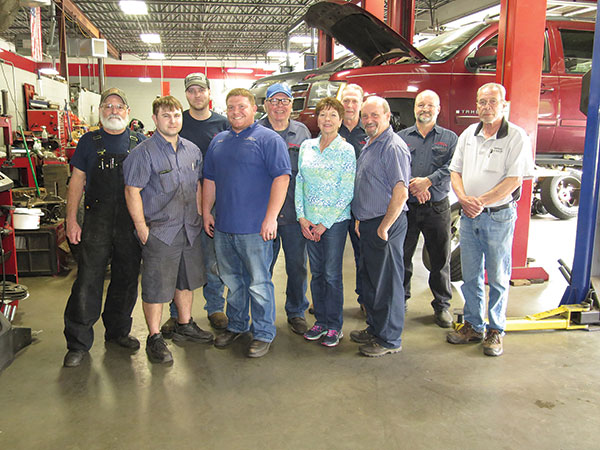
 She and her husband, Jerry, ran Egg-A-Day, which became the Mini Market, on U.S. 11 between Trussville and Argo for 28 years. They sold the concrete yard art her parents made in a chicken house behind the convenience store. They shut that store down in 2004, then opened Sylvia’s Birdbath & Beyond at the intersection of the Argo-Margaret Road and Farm Lake Road. The name of her business was the suggestion of a customer.
She and her husband, Jerry, ran Egg-A-Day, which became the Mini Market, on U.S. 11 between Trussville and Argo for 28 years. They sold the concrete yard art her parents made in a chicken house behind the convenience store. They shut that store down in 2004, then opened Sylvia’s Birdbath & Beyond at the intersection of the Argo-Margaret Road and Farm Lake Road. The name of her business was the suggestion of a customer.
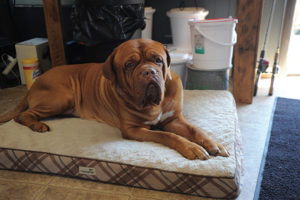
 It may be a gasp at just how big his head is – he’s a mastiff – or if you’re a dog lover, the natural instinct kicks in, and petting is surely on its way. At least, Boss seems to hope so.
It may be a gasp at just how big his head is – he’s a mastiff – or if you’re a dog lover, the natural instinct kicks in, and petting is surely on its way. At least, Boss seems to hope so.



















































































































 While Neely Henry is not as developed as Logan Martin, it does have its advantages – less crowded, being one of them. “You can be at Publix in Rainbow City in 10 minutes. You can go by boat to restaurants like Top of the River and have dinner.” He also noted that the new Canoe Creek Park opening this summer will be an asset, which will give more public access to the lake, will be state-of-the-art and will bring more major fishing tournaments to Neely Henry.
While Neely Henry is not as developed as Logan Martin, it does have its advantages – less crowded, being one of them. “You can be at Publix in Rainbow City in 10 minutes. You can go by boat to restaurants like Top of the River and have dinner.” He also noted that the new Canoe Creek Park opening this summer will be an asset, which will give more public access to the lake, will be state-of-the-art and will bring more major fishing tournaments to Neely Henry.